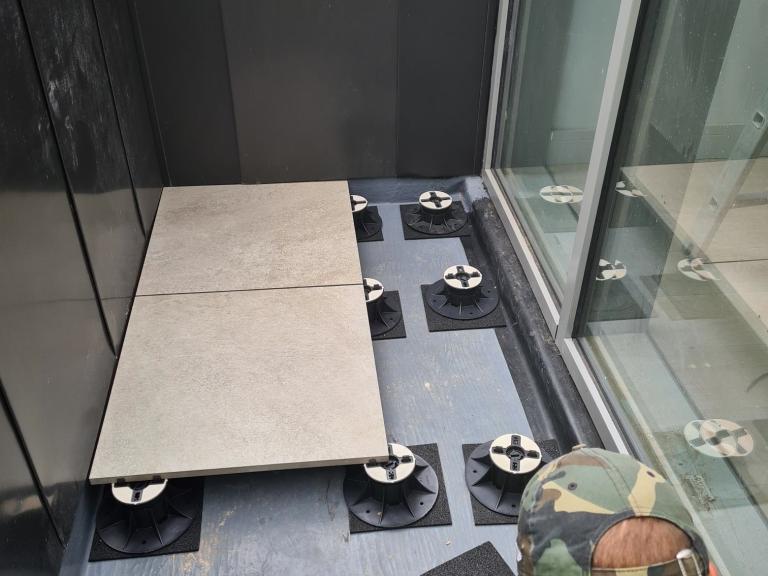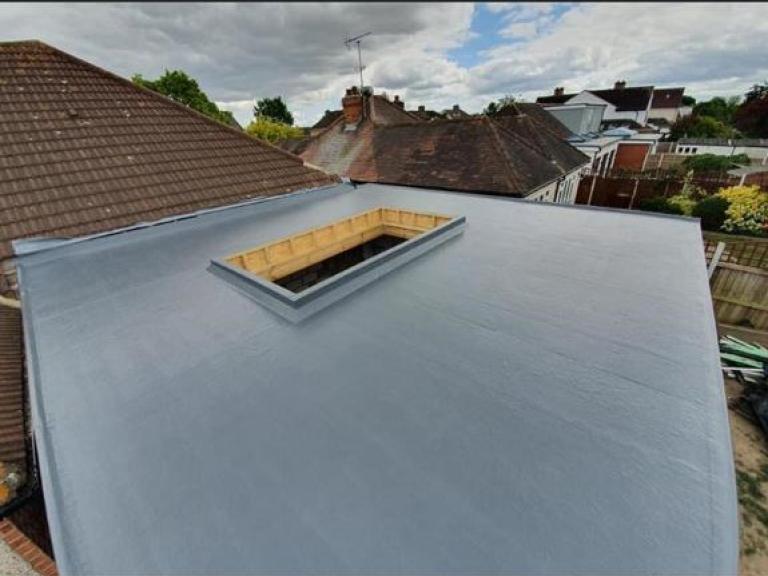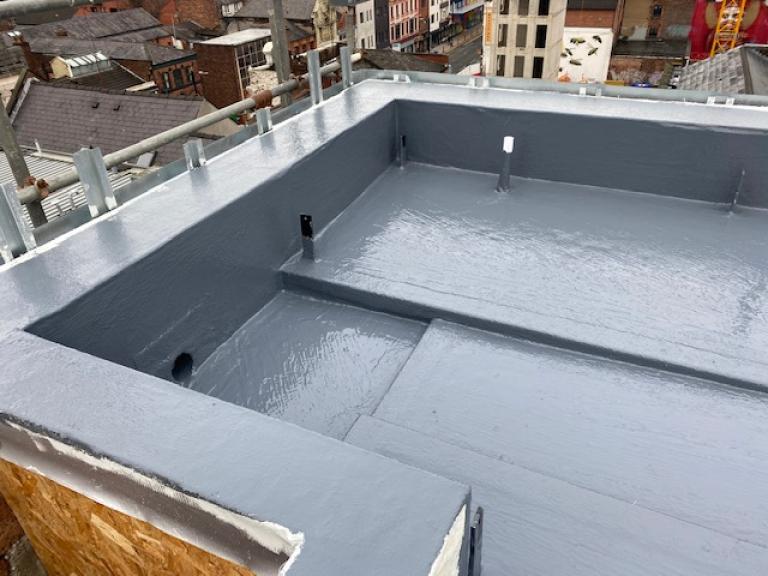Warm roofs are insulated roofs with a very low "U-value": 'U-value' measures the rate at which heat transfers over time through a building element (e.g., the roof). The better your roof retains heat, the lower your roof's U-value. All roofs need to be insulated but warm roofs can be insisted upon by building regs, especally where a new roof joins a main building. Because the polymer roofing system reuses spent plastic particles, it retains the thermal insulation properties of plastic, making it an ideal choice for the job (it works for 'cold' roof insulation too - click through to see how we help with each). It's also jointless and seamless, making it harder for heat to escape, and can be tapered to ensure good water drainage.
Warm Roofs

This insulated terrace roof in the small village of Carno in Powys SY17 required warm roof insulation, noggings/noggins fitted for balustrade railings, and a tapered gradient for drainage. It also enjoys a fully waterproof and weatherproof 20 year guaranteed polymer system.
To discuss your warm roof, or any other roofing needs call today on 01970 610047 or drop us an email - we aim to reply to all emails within 24 hours and…

This roof in Llandinam (SY17) was an unusual project in terms of shape and design - constituting a wide strip of roofing surrounding a central opening for an extra large skylight lantern aperture over a sun room. The roofing area also needed to be meticulously tapered to the guttering to provide thorough drainage from the central area to avoid puddling, which could damage the roof structure and impair safety. We used two outlets draining to a…

This detached building in Hereford required a new warm roof (for more on warm roofing click here) to comply with building regulations and create a cosy environment below. The photographs show the overall building as well as the joists ready for insulation.
To discuss your warm roof, or any other roofing needs call today on 01970 610047 or drop us an email - we aim to reply to all emails within 24 hours and NEVER pass…

This balcony terrace roof in Manchester, accessed from sliding doors, required tapered warm-roof insulation and porcelain tile topping to bring it up to the level of the doors. The porcelain tiles needed sturdy, durable support from below whilst leaving sufficient space for insulation. As the photo shows, this was achieved using a system of raised steel supports, padded from below to avoid damage to the polymer roofing below, and clips to…

This new roof extension on a roof in Brentwood, Essex, was relatively straightforward despite the prominent central skylight and the fact it adjoins the main roof. The polymer system's inherent flexibility means details and joins are no problem.
As the photo shows, the finished roof is jointless and seamless, and "perfect forming" around the central skylight. It was also fully mechanically cured within 72 hrs, fully waterproof and…

This flat roof on Spear Street in Manchester needed a warm roof installation (click to find out more about warm roofs, cold roofs and flat roofs, or use the nav link above). To ensure good heat efficency, the government set strict U-Values for many types of roof, with lower numbers being better. Using the polymer system, we were able to achieve a fantastic 0.15 U-Value on this roof.
Take a look through the pictures above to see the…